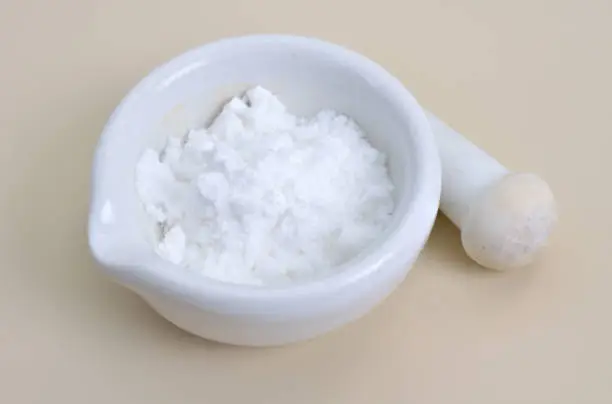L-Aspartic Acid: Nature's Building Block
A naturally occurring non-essential amino acid, L-Aspartic acid, or simply aspartic acid, is found in the human body. This pivotal compound assumes a crucial part in different physiological cycles, making it an essential part of our organic cosmetics.
As a central participant in protein blend, L-Aspartic corrosive adds to the development of fundamental proteins that our bodies need to ideally work. It aids in the body's removal of excess nitrogen by participating in the urea cycle and the production of additional amino acids.
Besides, L-Aspartic corrosive fills in as a synapse in the cerebrum, working with correspondence between nerve cells. This capability highlights its significance in mental cycles and generally neurological well-being.
In the domain of sustenance, L-aspartic acid is plentifully found in different food sources. This amino acid is abundant in meat, poultry, and dairy products, which are all high in protein. L-Aspartic acid can be found in plant-based options like asparagus, avocados, and legumes, making it accessible to people with different dietary habits.

Aspartame: The Artificial Sweetener
Aspartame, on the other hand, is a common artificial sweetener found in many products that are sugar-free and low in calories. Dissimilar to L-Aspartic acid, aspartame isn't normally happening however is orchestrated in research centers.
There are two types of amino acids in aspartame: aspartic corrosive and phenylalanine, alongside methanol. Aspartame is broken down into these components when consumed. It means a lot to take note of that while aspartic corrosive is one of its constituents, aspartame itself isn't equivalent to L-Aspartic corrosive.
The essential utilization of aspartame is as a sugar substitute. It furnishes pleasantness without the calories related to sugar, settling on it a famous decision in diet soft drinks, without sugar gum, and different "light" or "diet" food items. Aspartame is multiple times better than sugar, considering its utilization in small amounts to accomplish the ideal degree of pleasantness.
Notwithstanding its broad use, aspartame has been a subject of debate. While various investigations have considered it ok for utilization inside suggested limits, people report an aversion to this counterfeit sugar. Consumers must be aware of their reactions and seek advice from healthcare professionals if they have questions.
Distinguishing Between L-Aspartic Acid and Aspartame
Albeitd d aspartic acid powder and aspartame share an association through the presence of aspartic corrosive, they are essentially various mixtures with unmistakable properties and utilization.
L-Aspartic corrosive is a normally happening amino corrosive fundamental for different physical processes. It's a structure block of proteins and assumes a part in energy creation and neurotransmission. Our bodies can combine L-Aspartic corrosive, and we additionally get it through our eating regimen.
Aspartame, alternately, is a fake sugar made to give pleasantness without calories. While it contains aspartic corrosive as one of its parts, its essential capability is as a sugar substitute in food and refreshment items.
These substances have markedly different chemical structures. L-Aspartic corrosive exists as a solitary amino corrosive particle, while aspartame is a more complicated structure made out of two amino acids and methanol.
According to a dietary viewpoint, L-Aspartic corrosive is viewed as a supplement, adding to our protein admission and general well-being. Aspartame, in any case, is not a supplement but rather a food-added substance utilized for its improving properties.
It's significant that people with phenylketonuria (PKU), an intriguing hereditary issue, should stay away from aspartame because they fail to process phenylalanine, one of aspartame's parts. This limitation doesn't have any significant bearing on L-Aspartic corrosive utilization.
In the domain of taste, L-Aspartic corrosive has a somewhat sharp flavor, while aspartame gives a sweet taste like sugar. The distinct characteristics of these two compounds are further emphasized by their distinct flavor profiles.

Understanding the distinctions between L-Aspartic corrosive and aspartame is essential for buyers to settle on informed conclusions about their eating routine and sustenance. While both have their spot in the food business and our regular routines, they fill different needs and ought not to be confounded or utilized reciprocally.
Conclusion
In conclusion, although the names aspartic acid powder and aspartame may appear to be interchangeable, they are in fact distinct compounds with distinct functions and properties. L-Aspartic corrosive is a normally happening amino corrosive fundamental for different physical processes, while aspartame is a fake sugar utilized as a sugar substitute. Understanding these distinctions considers better-educated decisions in sustenance and dietary preparation.

L-aspartic corrosive, as an urgent amino corrosive, assumes a critical part in protein blend and neurological capability. It's a white, unscented translucent strong with a sub-atomic equation of C4H7NO4 and a sub-atomic load of 133.1 g/mol. This amino corrosive is exceptionally dissolvable in water and has a softening mark of 270-271°C. It is a valuable compound in a variety of industries, including biotechnology and nutrition, due to its significance in biochemical processes.
For additional data about L-Aspartic corrosive and its applications, kindly reach us at aaron@healthfulbio.com. Our group at HSF Biotech is devoted to giving top-notch items and master information in the area of biotechnology.

